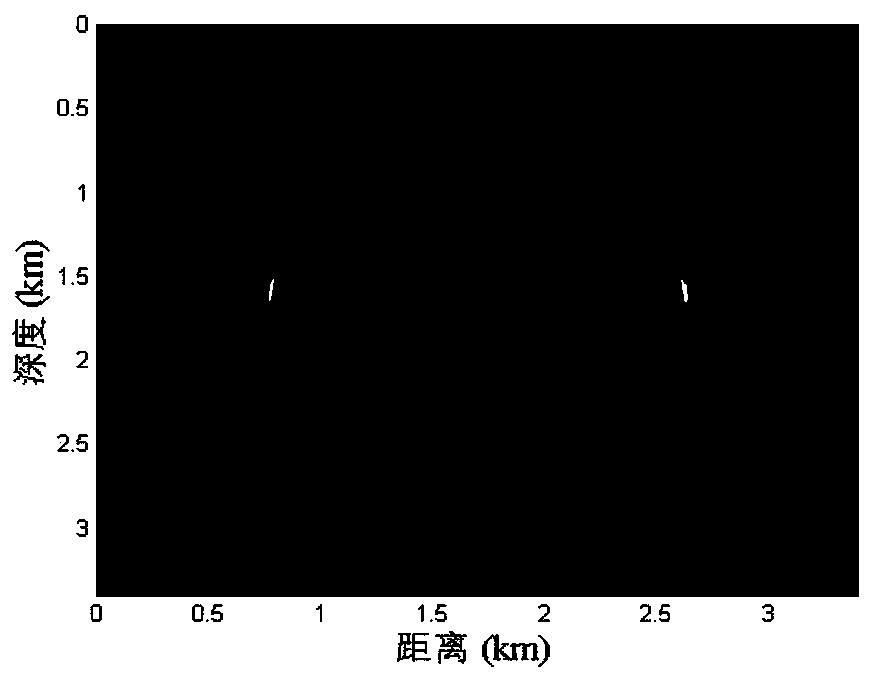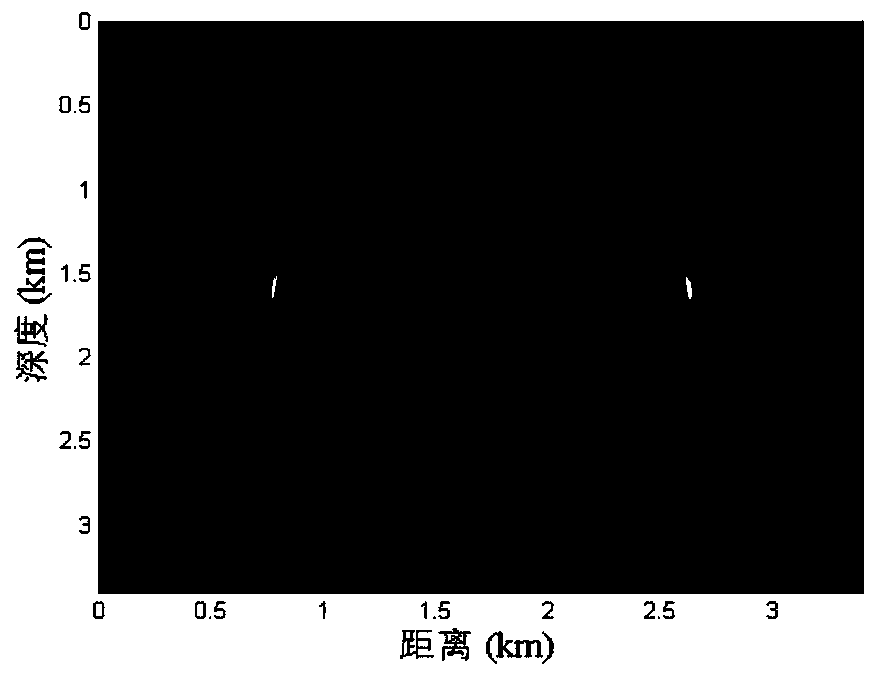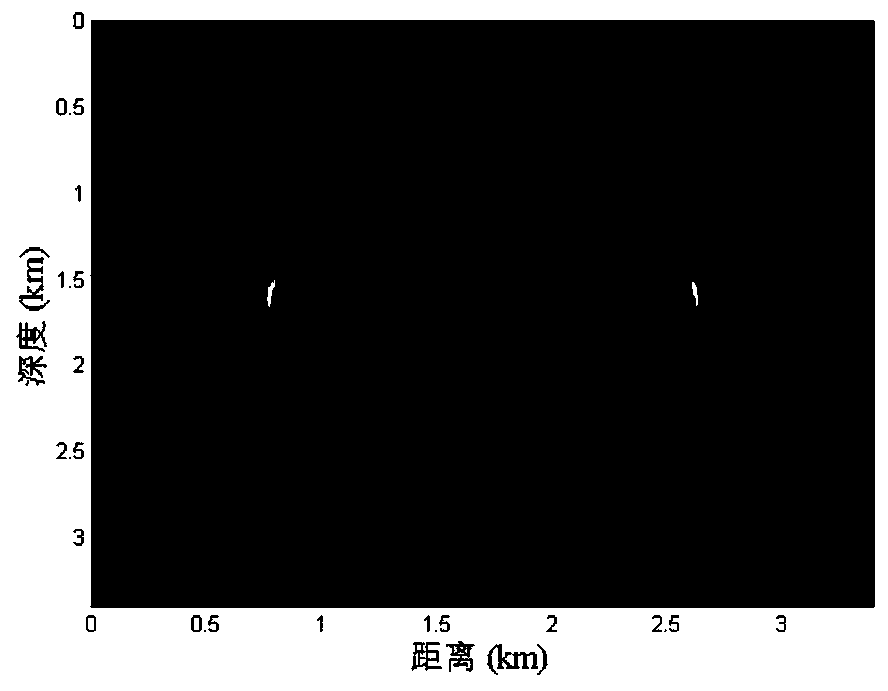Attenuation compensation reverse time migration realization method based on constant Q viscous sound wave equation
A technology of attenuation compensation and reverse time migration, which is applied in the field of geological exploration and can solve problems such as huge amount of calculation
- Summary
- Abstract
- Description
- Claims
- Application Information
AI Technical Summary
Problems solved by technology
Method used
Image
Examples
Embodiment 1
[0071] Embodiment 1, a method for realizing the attenuation-compensated reverse-time migration based on the constant-Q viscous acoustic wave equation of this embodiment, includes: Step 1) When selecting the forward modeling model of the reverse-time migration, use Taylor series expansion The strategy deals with the decoupled constant Q viscous acoustic wave equation for the variable fractional problem, which is used for the continuation of the wave field, and records the acoustic wave field information in the viscous medium at the detection point. The form of the wave field information is shown in Figure 1(d) , wherein the viscoacoustic equation is a forward modeling equation; Fig. 1 is a forward simulation schematic diagram of the constant Q viscoacoustic equation used in a layered model in the present invention, wherein, the upper layer Q=100, the lower layer Q=20, and the excitation point is located at 20 sampling points above the horizontal interface; Figure 1(a) , 1(b) ,...
Embodiment 2
[0075] Embodiment 2, on the basis of embodiment 1, described step 1) in, described adopting the decoupling constant Q viscous acoustic wave equation that handles variable fractional problem with Taylor series expansion strategy, comprises the following steps:
[0076] Step a) select the higher simulation accuracy in the complex region of the Q model, and use the Taylor series expansion strategy to deal with the decoupled constant Q viscous acoustic wave equation of the variable fractional problem as the forward equation;
[0077] Step b) According to the forward modeling equation in step a), carry out the forward modeling simulation for the given velocity, Q model and selection of appropriate excitation parameters, and record the viscous acoustic wave field information of forward extension at the detection point.
[0078] In the described step a), the forward equation described in the decoupling constant Q viscous acoustic wave equation of dealing with variable fractional order...
Embodiment 3
[0087] Example 3, on the basis of Example 1, in step 4), the two-dimensional constant Q viscous acoustic wave equation is extended to three dimensions, and the corresponding excitation amplitude-based imaging conditions are obtained, wherein the three-dimensional constant Q viscous The form of the hysteresis wave equation is as follows:
[0088]
[0089] Where p=p(x) represents a three-dimensional viscous acoustic wave field, x=(x, y, z) is a three-dimensional Cartesian coordinate system,
[0090]
[0091] as well as is a three-dimensional Laplacian. The form of the excitation amplitude imaging condition of the three-dimensional improved stable compensation is as follows:
[0092]
PUM
 Login to View More
Login to View More Abstract
Description
Claims
Application Information
 Login to View More
Login to View More - R&D
- Intellectual Property
- Life Sciences
- Materials
- Tech Scout
- Unparalleled Data Quality
- Higher Quality Content
- 60% Fewer Hallucinations
Browse by: Latest US Patents, China's latest patents, Technical Efficacy Thesaurus, Application Domain, Technology Topic, Popular Technical Reports.
© 2025 PatSnap. All rights reserved.Legal|Privacy policy|Modern Slavery Act Transparency Statement|Sitemap|About US| Contact US: help@patsnap.com



